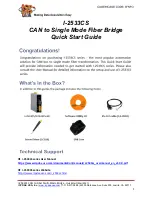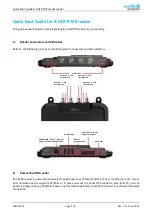
Copyright 2015 Bakker Magnetics B.V., Son, the Netherlands, BM 2015/10
10
NL
ENG
FRA
DEU
ESP
PLK
DAN
SVE
FIN
CZE
SVK
USER'S MANUAL
Switchable lifting magnets (Permanent,
Neodymium)
This user's manual applies to the following models:
BAXX 125, BAXX 250, BAXX 500,
BAXX 1000, BAXX 2000
FOREWORD
Thank you for purchasing a permanent neodymium BAXX
lifting magnet from Bakker Magnetics B.V.
Upon delivery, please inspect the lifting magnet for
damage and make sure you have received a manual and
test certificate.
Never use a damaged lifting magnet. Contact your
supplier if the equipment is damaged.
This user's manual is part of the product and contains all
of the information necessary for optimal, safe use of the
lifting magnet; it must be available to users of the lifting
magnet at all times.
Therefore, make sure that the user's manual is available
throughout the entire lifespan of the lifting magnet.
Always follow the regulations, instructions and tips in this
manual in order to ensure safe use and a long lifespan for
the lifting magnet.
The test certificate is enclosed as a separate attachment.
SAFETY
The permanent lifting magnets supplied by Bakker
Magnetics B.V. comply with all relevant safety
requirements required by law.
RESPONSIBILITIES OF THE OWNER, OPERATORS AND
TECHNICAL PERSONNEL WITH REGARD TO SAFETY
Deze handleiding maakt deel uit van het totale product
This manual is part of the complete product and must
therefore always be available to the people who work
with the lifting magnet. Make sure that the people who
work with the lifting magnet have read this manual in
advance and that they have also understood its contents.
The use of lifting equipment to move
workpieces always involves danger.
Therefore, before lifting, you must consider the potential
dangers.
Because accidents involving lifting equipment often lead
to serious bodily injury, the following safety measures
and special instructions must be followed during all
inspection and maintenance operations to ensure safety:
Safety measures and special instructions
• The maintenance of the lifting magnet must be
performed in accordance with the instructions in this
manual.
• Never move the lifted load into the vicinity of another
person.
• Make sure that no one is beneath a lifted load.
• Never leave a lifted load unattended.
• Never allow an unauthorized person to operate the lifting
magnet.
• Never lift more than one workpiece at a time.
• Make sure the entire lifting system has sufficient lifting
capacity to lift the entire weight of the load plus the
lifting magnet.
• Never use the lifting magnet to transport persons.
• Protect the magnet from moisture and dust to the extent
possible.
• Never expose the magnet to temperatures lower than 0
°C or higher than 60 °C.
• Electronic equipment (e.g. pacemakers, hearing aids,
computers, monitors) and magnetic data storage media
(e.g. credit cards, tapes) can be influenced or damaged by
magnetic fields. Keep such items at a distance from the
lifting magnets.
USE AND OPERATION
Only use the lifting magnet for the purpose for which it
was designed!
Permanent lifting magnets supplied by Bakker Magnetics
B.V. are used to move steel loads. Permanent lifting
magnets are particularly useful for operations involving
workpieces that are too large and/or too heavy to be
moved by hand. To do so, the permanent lifting magnet is
attached to a hoist with a suitable coupling. The hoist is
used to move the lifting magnet onto the load, and then
the lifting magnet is switched on by means of the
attached handle.
Initial use
Lifting systems may only be put into use after they have
been tested by a safety officer and any circumstances
that could negatively influence that lifting capacity have
been eliminated.
Before moving the lifting magnet into the vicinity of the
workpiece or other materials, make sure the lifting
magnet is switched “off” because otherwise there
is a danger that the workpieces will jump
toward the lifting magnet.
Make sure that the contact surface between the
magnet and load is clean and smooth.
To the extent possible, position the magnet at
the centre of gravity of the workpiece.
Make sure that there are no obstacles in the path
to be followed by the workpiece so the load can
be moved to its destination without any jolts or
blows.
When assessing the lifting capacity of the magnet,
in addition to the weight, the following factors
also play a role:











































